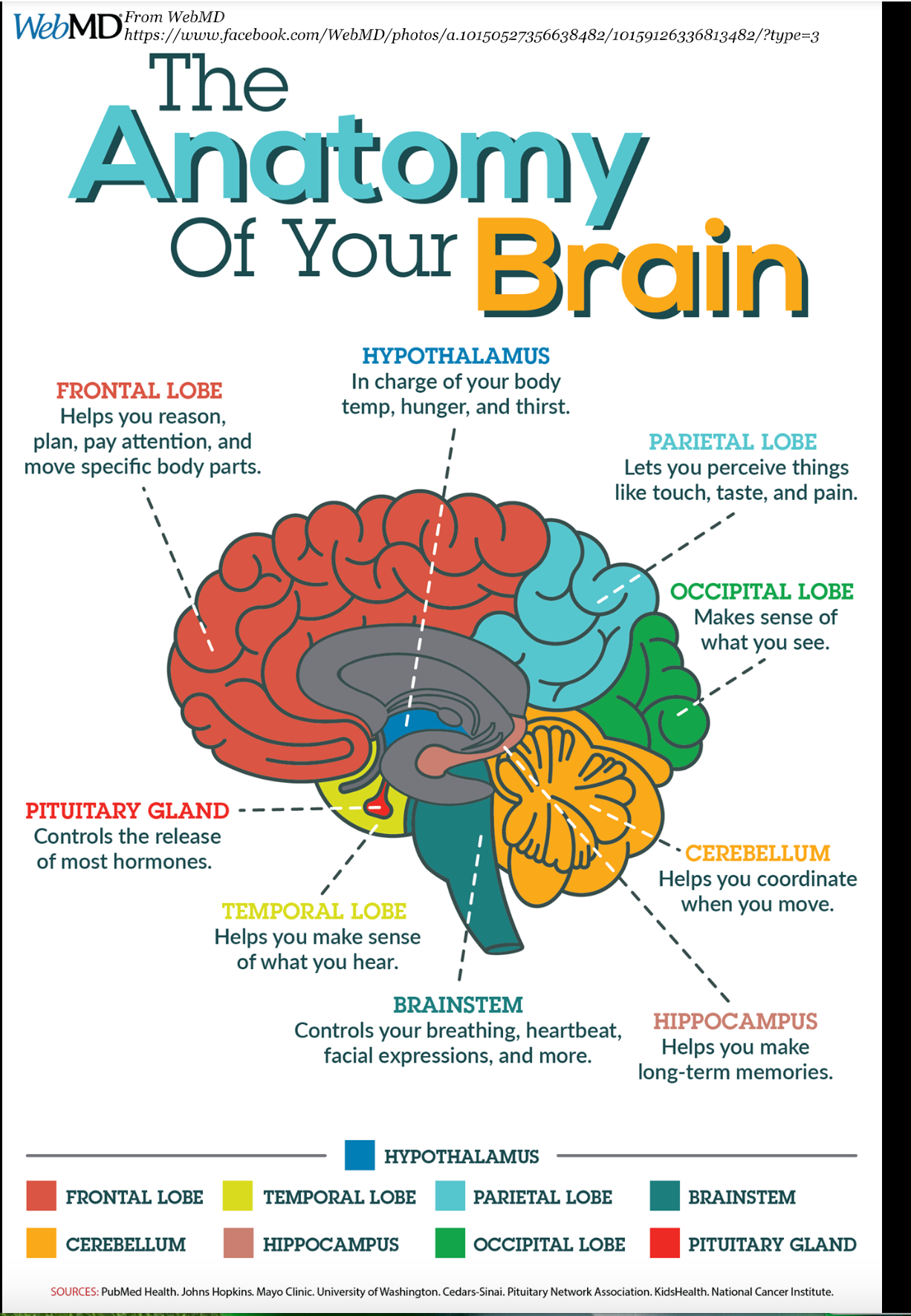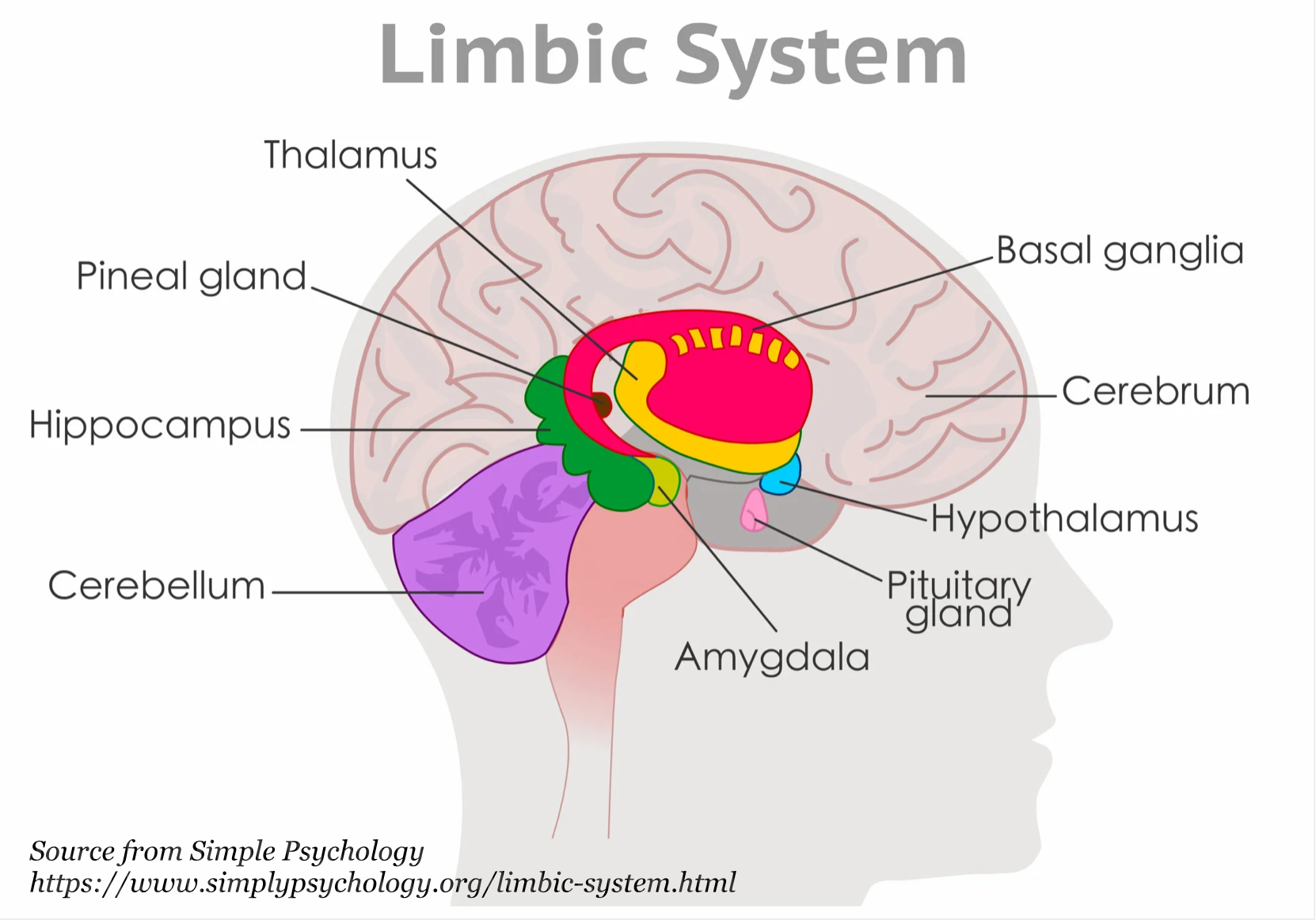Brain development starts prenatally from “bottom-up,” meaning the brain stem develops first. This area controls our automatic nerve functions, such as breathing, heartbeat, and vital organs. We don’t need to have memories or feelings; we usually don’t notice them, but it’s happening independently.
On top of the brainstem is the Cerebellum. This area of the body coordinates the movements, balance, and equilibrium. On top of the cerebellum and in the outer regions of the lower brain, there is the temporal lobe (auditory), occipital lobe (visual), and parietal lobe (sensory). A healthy baby is born with auditory, visual, and sensations. You probably noticed that a baby’s primary goal is to ensure survival. Therefore, they communicated via various nonverbal ways, such as crying, smiling, and cooing, to ensure basic survival was fulfilled without words. As the baby grows, their fine motor movement also grows. All these functions are at the bottom and outer side of the brain and connected to the brainstem. Therefore, they developed first for survival.
As the baby grows into a toddler and then young child, they pick up language and words, identify objects and relationships, and make memories. This is where most of the work happens during the EMDR, called the limbic system. The limbic system is located between the cerebrum of the Brian and below all the temporal lobes and under the cerebral cortex (the front of the brain.) This is the brain area where we learn to process emotions and exchange information with other people.
A toddler learns language and emotions, time, place, and people. The memories of their interaction with people are stored in this area, but it is often pieces of information due to their language development; for a child to have a complete memory (from beginning to the end, knowing why, how, and the relationship), they must have a much-sophisticated language development to understand the time, connection, and interaction with their surroundings.
Before that, the child often remembered pieces of information related to images (visual, occipital lobe), sensations (sensory, parietal lobe), and sounds (auditory, temporal lobe). However, it is until about 4-5 years of age that a child’s language development is mature enough to retain a completed memory from the beginning to the end and the transitions connecting to different pieces of information (parietal lobe ability). Without complete language ability, toddlers and young children communicate via their emotions. For example, they expressed their sadness, frustration, exhaustion, disappointment, etc., via emotional expression. When they are happy, they are on top of the world. When they are unhappy, it’s the end of the world.
The frontal lobe is the last to develop after the children gradually acquire language abilities and more mature emotional expression (limbic system and parietal lobe maturity). It’s located in the front of the head and controls decision-making, reasoning, executive function, reasoning, and understanding abstract ideas, etc.. (All the fun things we expect an adult should know how to do.)
In many childhood family trauma, the traumatic events happen before the children can fully comprehend the event (before the cortex brain fully develops while the lobes region and the limbic system has the memories and emotions connecting to the trauma). Nevertheless, the children remembered the sensory and somatic experiences and feelings associated with the traumatic memories.
So, as an adult, even though “I know it’s not my fault” (the “frontal cortex”), “I feel (sensory, somatic, and emotional experiences) it’s my fault” (the “parietal lobe and limbic system”).
After I received EMDR training and understood brain development, I realized why some of my prior clients were not receiving the full benefit of psychotherapy. I failed to acknowledge their somatic and sensory experiences in their trauma memory.
Understanding brain development helps to understand the four essential aspects EMDR therapy focuses on in the trauma healing process: physical sensations; the images represent the worst part of the experiences, what you think about yourself in the worst part of the memory, and how do you feel when you are in the worst part of the memory. These four elements presented the sensory and somatic information, the limbic system experiences, and the frontal lobe explanation.
Traditional psychotherapy, such as Cognitive Behavioral Therapy, focuses on what you think and feel, heavily on the frontal lobe. However, many traumatic memories are locked with the childhood comprehension of the events and bodily experiences. Therefore, when the brain receives the trigger, it doesn’t differentiate whether the trigger is present or past, and the body immediately goes into action for survival. I often explained this to my clients: “Your frontal cortex says I understand why, but my limbic system says my body feels differently.”
“So, EMDR is so easy, right? I just wave my wand, and I magically delete all my clients’ trauma!” The reality is it sounds simple but not easy.
Check out the reasons why EMDR sounds simple but not easy.
Click on the following links to read more about Brain Function:
Brain Anatomy and How the Brain Works.
Eye Movement Desensitization and Reprocessing Therapy (EMDR) Series
Brain Development and EMDR Therapy
Making the most of EMDR: Difficulties in Going Through EMDR Treatment.


2 Responses